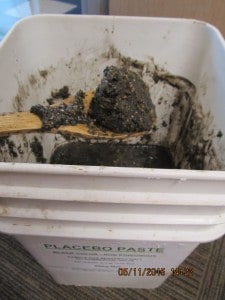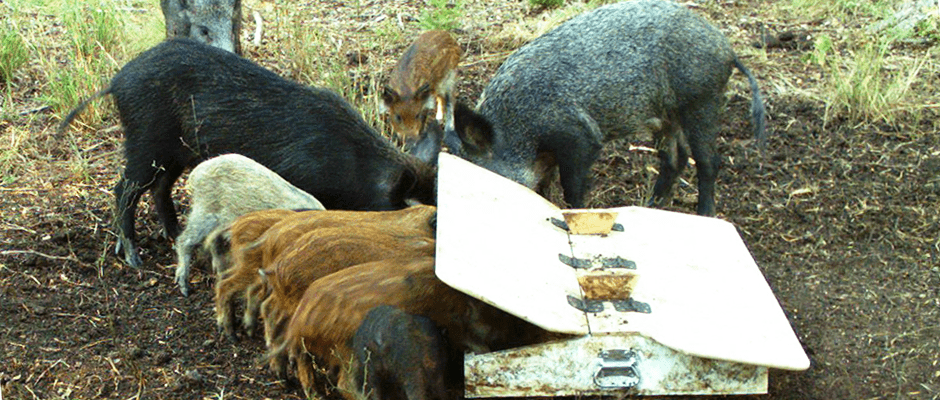Share this article
Wildlife Services Develops a New Toxin for Feral Swine
Feral swine are one of the most difficult invasive species to eradicate in North America. The pigs (Sus scrofa), first introduced from Europe, are intelligent enough to avoid many traps and can change their behavior to be more evasive and nomadic once they’ve had encounters with hunters.
But researchers from the U.S. Department of Agriculture’s Wildlife Services, Texas Parks and Wildlife Department, and Australian and New Zealand partners are perfecting a poison that’s as basic as bacon for breakfast: salt.
“How it kills the animals is by reducing the ability of the red blood cell to release oxygen to the tissues,” said Kurt VerCauteren, the feral swine project leader for Wildlife Services at the National Wildlife Research Center in Fort Collins, Colo. at a presentation at The Wildlife Society’s ongoing annual conference in Winnipeg.
We and others are developing toxicants that can be used to kill feral swine, but as of yet none have been registered in the U.S., he said. Techniques currently used to manage feral swine include different strategies associated with shooting, trapping, and fencing. But, VerCauteren has been working with other researchers to develop a toxicant based on sodium nitrite — a kind of salt that, ironically, is sometimes used to preserve pork.
While safe in small quantities, high enough quantities of sodium nitrite can likely kill any mammal.

A scoop of black-colored peanut paste to serve as a bait matrix for delivering a toxicant, sodium nitrite, to feral swine. Manufactured by Animal Control Technologies P/L, Vic, AU. Image Credit: Nathan Snow, Texas A&M University-Kingsville and USDA National Wildlife Research Center.
VerCauteren said that using salt in its basic form is relatively cheap, but the researchers have to implement a more expensive process to keep the pigs from smelling trouble. They microencapsulate the salt so that it’s odorless to the swine, yet will still break down in their digestive systems and kill them.
Their latest formulations have proven very effective in a pen setting. While initial tests showed 70-85% mortality, more recently they have achieved over 90%.
VerCauteren said they’ve delivered the toxicant to pigs in tests using peanut paste, though they make it look black and dirty in an attempt to “make it as unattractive to other animals as possible.”
And herein lies one of the other challenges. The researchers are working on improving the delivery design to create devices that only feral swine can access.
This proved particularly difficult with crafty racoons (Procyon lotor) — the bigger ones can push open the lids on bait boxes that weigh up to 28 pounds. “There are photos of racoons pushing [the box] like a weight lifter, with another one on top,” VerCauteren said. As a solution, the researchers installed magnets that kept the lid down for everything but a force stronger than 30 pounds — something that even the biggest raccoon shouldn’t be able to cope with.
After our current pen trials the EPA will review the results, which will take 18 months, and if all goes well we will then conduct field trials and the product could be registered in five years.
Header Image: Feral swine accessing prototype bait station A sounder of feral swine in South-Central Texas using a bait station designed to exclude nontarget species from consuming the toxic bait. Image Credit: APHIS








